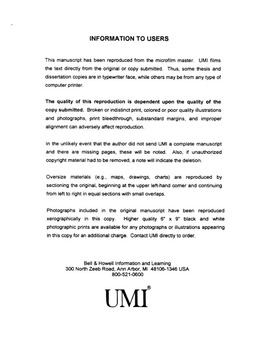| dc.contributor.advisor | Stalford, Harold L., | en_US |
| dc.contributor.author | Epp, David S. | en_US |
| dc.date.accessioned | 2013-08-16T12:18:36Z | |
| dc.date.available | 2013-08-16T12:18:36Z | |
| dc.date.issued | 2002 | en_US |
| dc.identifier.uri | https://hdl.handle.net/11244/478 | |
| dc.description.abstract | The second major contribution is the development of a special method for determining the reachable sets for unit peak inputs associated with the six control cases of the 3-D semi-active control system. The tight bounds are found to have values that range from 0.38 to 0.41. | en_US |
| dc.description.abstract | The first major contribution of this dissertation is the development of a Linear Matrix Inequality (LMI) method applicable to our class of piecewise linear systems, which provides a tighter upper bound on the peak-to-peak gain performance. In its application to the six control cases of the 3D example for determining the peak-to-peak performance gain, the new LMI method yields results that are up to 4.5 times better than the benchmark value of the open valve case. The gap between the LMI upper and lower bounds of simulation is reduced significantly below one order of magnitude for the 3-D system. | en_US |
| dc.description.abstract | One of the open problems in the literature is determining tight bounds for the peak-to-peak gain of piecewise linear systems. A certain class of piecewise linear systems results from stabilizing linear semi-active control systems. Previous works in the literature have used a classical Lyapunov-based method to compute upper bounds and have used extensive simulations to compute lower bounds for this class of piecewise linear systems. These upper and lower bounds are usually separated by a gap of several orders of magnitude. In this dissertation, the open problem of finding tighter bounds for peak-to-peak performance gains of such piecewise linear systems is investigated. | en_US |
| dc.description.abstract | For the purpose of evaluating the tightness of peak-to-peak performance gain methods, four semi-active control system examples are defined. The peak-to-peak performance gain of the stable, linear, passive system is used as a benchmark to gauge the relative size of the performance bounds. When applied to the six control cases for the 3D example, the classical method yields upper bound values that are 2--6 orders of magnitude larger than the benchmark value. Extensive simulation of the six control cases yields lower bound values that are more than one order of magnitude less than the benchmark value. | en_US |
| dc.format.extent | xxiv, 286 leaves : | en_US |
| dc.subject | Engineering, Mechanical. | en_US |
| dc.subject | System analysis. | en_US |
| dc.subject | Structural control (Engineering) | en_US |
| dc.subject | Lyapunov stability. | en_US |
| dc.subject | Vibration. | en_US |
| dc.title | Tighter peak-to-peak performance bounds for piecewise linear systems with application to a class of semi-active control problems. | en_US |
| dc.type | Thesis | en_US |
| dc.thesis.degree | Ph.D. | en_US |
| dc.thesis.degreeDiscipline | School of Aerospace and Mechanical Engineering | en_US |
| dc.note | Source: Dissertation Abstracts International, Volume: 63-05, Section: B, page: 2546. | en_US |
| dc.note | Adviser: Harold L. Stalford. | en_US |
| ou.identifier | (UMI)AAI3053174 | en_US |
| ou.group | College of Engineering::School of Aerospace and Mechanical Engineering | |
